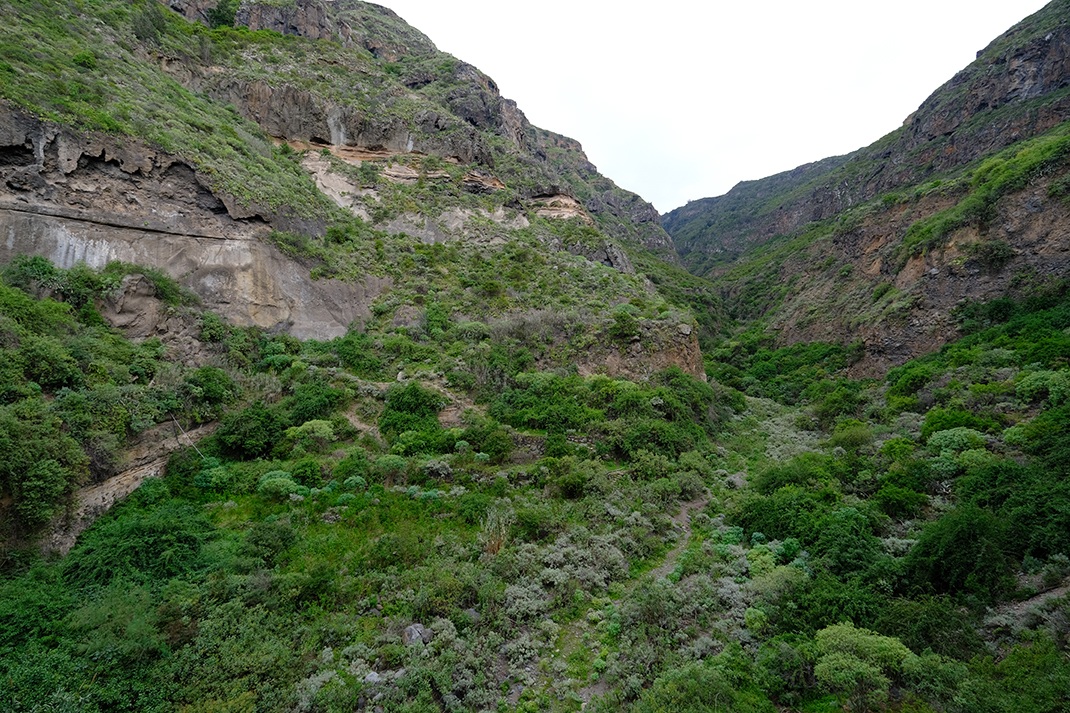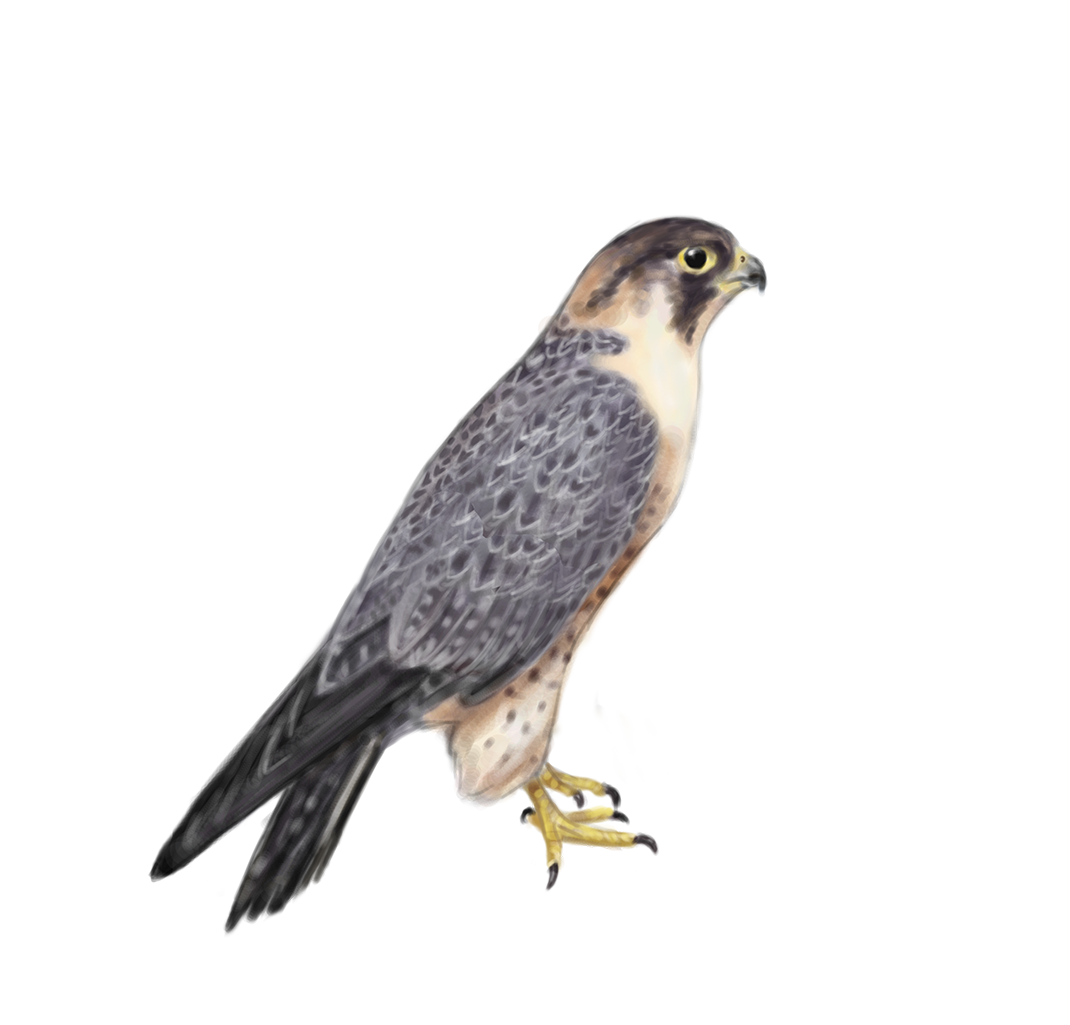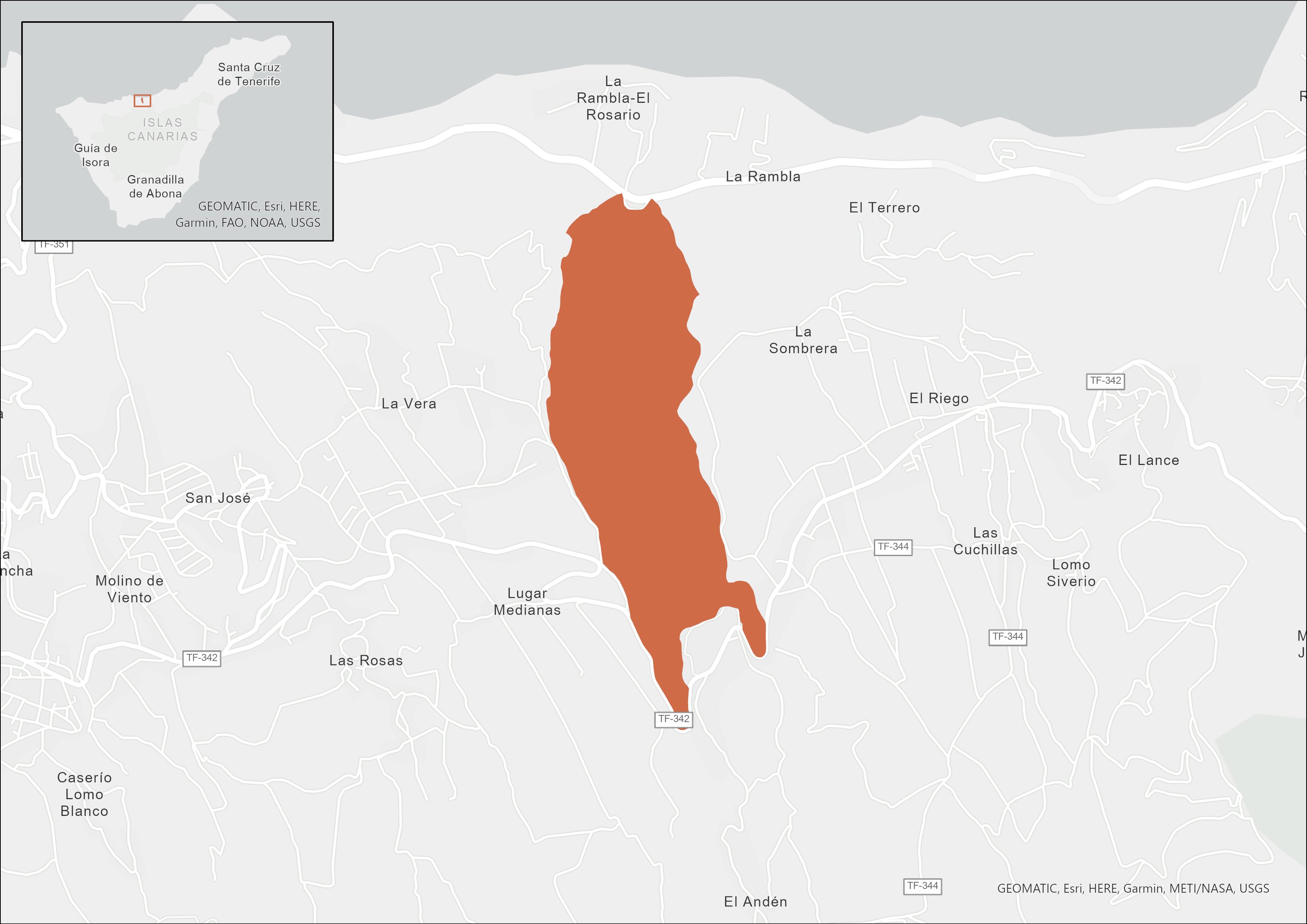Plan your next adventure
Tailor your own route along Tenerife’s trails quickly and easily..
Go to planner
The Barranco de Ruiz Site of Specific Scientific Interest is set within an impressive, rugged landscape.
Recommended time to visit: All year-round.
This site is dominated by a stretch of ravine just over 2 km in length, 1/2 km wide at its most open parts, and a narrow watercourse embedded into the terrain.
Its significance lies in the well-preserved remaining laurel forest, thermophile forests and rock-dwelling plant communities.
However, the ravine is situated very close to the built-up areas of El Rosario, La Vera in San Juan de la Rambla and Icod el Alto in Los Realejos. This proximity has played a key role in the current state of the landscape, as human intervention over centuries has adapted some parts of the ravine, converting the land into agricultural plots.

The flora in the Barranco de Ruiz is very diverse and changes at different altitudes:
The most important vertebrate species, which in part justify the creation of this protected area, are Bolle’s pigeon and the laurel pigeon.
This is also one of the very few places in Tenerife where the Manx shearwater nests. It should be no surprise therefore that this is a Special Protection Area for Birds (SPA), governed by European regulations.
Other species that inhabit this area include small birds such as the canary, Eurasian blue tit, Eurasian blackcap, grey wagtail, common chaffinch, and robin, as well as kestrels and buzzards that build their nests in the ravine walls.

95.6 hectares (0.5% of the island)
Canary Islands St. John’s Wort (Hypericum canariense), lengua de pájaro (Globularia salicina), espino (Lycium intricatum), torvisca (Daphne gnidium), Phoenician juniper (Juniperus phoenicea), Canary willows (Salix canariensis), tree heath (Erica arborea), acebiño (Ilex Canariensis), laurel (Laurus novocanariensis), palo blanco (Picconia excelsa), madroño (Arbutus canariensis), barbusano (Apollonias barbujana), alhelí (Erysimum scoparium), cresta de gallo (Isoplexis canariensis), Bolle’s pigeon, laurel pigeon, Manx shearwater, kestrels, buzzard.
Monteverde, thermophile, ravine.
To consult permits for use and updated regulations for this Protected Natural Area, visit the official website of the Government of the Canary Islands.

Tailor your own route along Tenerife’s trails quickly and easily..
Go to planner